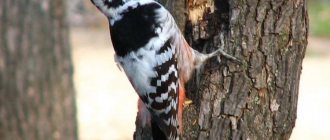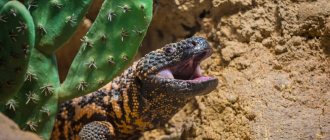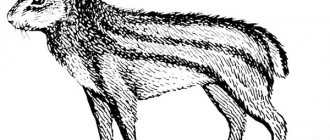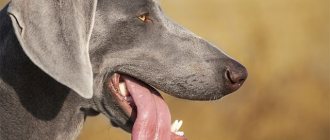The giraffe is an amazing animal, unlike other representatives of the fauna. The most famous part of its body is its unusually long neck, which makes this beast unique and recognizable. But the amazing things about giraffes don’t end there. For example, the size of his tongue is also amazing. The length of the giraffe is considered one of the largest not only among all land animals, but also among all mammals on the planet, second only to some of them.
The question of the length of the tongue of this animal arises so often, probably because it is located next to a very long neck, capable of reaching a length of two meters in adults. And if biologists are still arguing about the reasons for the emergence of such a long neck in the evolutionary development of giraffes, then with language everything is extremely clear.
There are several types of giraffes
Giraffes are traditionally grouped into one species, Giraffa camelopardalis, and divided into four large groups: northern (Giraffa camelopardalis), southern (Giraffa giraffa), reticulated (Giraffa reticulata) and Masai giraffes (Giraffa tippelskirchi). In addition, several subspecies are distinguished within these groups: West African, Ugandan, Nubian, South Sudanese, Kordofan, South African, Angolan and Thornycroft's giraffe.
Research has shown that there are differences in genetics, breeding timing, and coat structure (which indicate reproductive isolation) between different groups. By the 2010s, mitochondrial DNA studies determined that the genetic uniqueness caused by the reproductive isolation of one group from another was significant enough to split giraffes into four different species.
Cow
Cows have long, wide and rough tongues. Sometimes an animal’s tongue can reach 45 cm!
Calves do not have such a long tongue, but it all depends on the breed and age. Surprisingly, a cow can reach its back with its tongue.
The long organ is designed so that the cow can easily grasp and pick herbaceous plants. The animal mows plants thanks to its incisors, which are located on the lower jaw.
Interesting fact: there is even a saying among people: “Like a cow licked it with its tongue!” That is, with such a long tongue you can “reach” anything.
Giraffes have incredibly long and strong tongues
Photo: Slawek K
The blue-violet tongues of the giraffe are huge: their length ranges from 45 to 50 cm. Such long and muscular tongues are ideal for carefully plucking fresh leaves from the tops of even the most inaccessible tall trees. Giraffes give preference to the shoots and leaves of prickly acacia. Females, in particular, select foods that are high in energy and low in fiber. Large males consume up to 65 kg of food per day. They use their tongue for feeding 16-20 hours a day. The dark color of the tongue helps prevent sunburn, so the animals are able to feed all day without interruption.
The tongue and the inside of the mouth are covered with tough tissue. The giraffe grabs the leaves with its tenacious lips or tongue and pulls them into its mouth. If the foliage is not spiny, the giraffe “combs” the leaves from the stem, pulling them through the lower canines and incisors.
Giraffes get most of their water from their food, although during the dry season they drink at least once every three days. To reach a source of water with their heads, animals must spread their front paws.
Gender Differences
Interestingly, the length of this organ involved in digestion directly depends on gender. In females it is much shorter than in males, so record values always apply to males. It is characteristic that by the posture during feeding, even from afar, you can easily determine whether a female or a male is eating. The male, plucking leaves, throws his head back high and stretches his muzzle far up. Therefore, above all, the acacia is always eaten by males.
Females do not strive for such a height. They do not raise their heads, but lower them a little, so they get to the middle tier of acacia thickets.
Each giraffe has a unique set of spots
Photo: Louise Pilgaard
No two giraffes in the world have the same pattern, just like no two human fingerprints are identical. Researchers uniquely recognize giraffes by their unique dark spots. The colored patches of skin on a giraffe's body not only help it camouflage itself, but also dissipate heat throughout its body. Skin temperature is slightly higher in dark areas, which encourages the dilation of blood vessels beneath the surface of the skin. But the lower part of the animal’s body is completely devoid of dark spots.
Australian echidna – up to 20 cm
The Australian bizarre echidna is a unique creation of nature! Externally, the echidna can easily be confused with a hedgehog, because its body is covered with spines.
It is still not completely known where these amazing animals came from, and questions about their lives remain open. The echidna's tongue reaches 20 cm and has a sticky surface.
By the way, the animal prefers a solitary and nocturnal lifestyle, and independently obtains its own food and prey: ants, worms, mollusks, the echidna catches it with its long tongue - it sticks it out and then retracts it. Due to its sticky surface, food is held on the tongue and then swallowed.
Giraffes walk on tiptoes
Giraffes have two heavy hooves on each foot. These modified nails/claws provide strength and protection to grazing animals that require toe support on hard ground. Unlike humans, whose limbs have five long fingers, ungulates have compressed bones at the ends of their paws. This means that they actually walk on tiptoes, moving first their right hooves and then their left ones at the same time. In a gallop, the giraffe pushes off with its hind legs and its front legs come down almost together, but never two hooves touch the ground at the same time.
Giraffe hooves are the size of a dinner plate with a diameter of 30 cm! However, for giraffes, swamps, muddy soil and other soft surfaces present insurmountable obstacles, primarily due to their thin limbs and enormous weight. True, large hooves prevent giraffes from sinking into loose sand.
Universal organ
People are accustomed to thinking that the tongue is an organ associated exclusively with eating and speaking. This is a wrong point of view even in relation to human beings: just remember, for example, kissing, in which the tongue is very actively involved, but kissing is not associated with either speech or digestion.
In the animal world, the tongue is an even more universal organ. In addition to being an ideal taste analyzer invented by nature itself, it also serves to exchange genetic information, to protect against natural enemies, to catch prey, and is sometimes partially or completely capable of replacing limbs.
In a giraffe, this organ performs three functions at once: it is actively involved in the digestive system, serves to exchange information with its relatives, and occasionally replaces human hands and fingers.
Giraffes are herd animals
Photo: Wolfgang Hasselmann
Giraffes live in non-territorial groups of up to 20 individuals. Home ranges are as small as 85 square kilometers in wetter areas and up to 1,500 square kilometers in drier regions. Herding allows giraffes to increase their vigilance against predators. They have excellent vision, and when one giraffe watches, for example, a lion located a kilometer away, the rest of the herd also looks in the same direction.
Snake – up to 25 cm
Snakes live on all continents, their most important sense organ is the tongue. It reaches 25 cm. Observing the snake, you will notice that it constantly sticks out its tongue and wiggles it in the air. With what it can be connected?
Scientists were able to find out that snakes see poorly and cannot hear at all, and the tongue is the most important organ for them, because with the help of it the reptile maintains contact with the outside world. The snake uses it to “taste” what is nearby, picking up even the smallest particles of odor. To capture odorous molecules, the tip of the snake's tongue is forked.
Receiving information about the environment, the reptile, analyzing it, can find water, a trace of a victim or a partner. For example, if a cat runs by, it will leave behind a trail of smell that will hang in the air for several hours. People do not smell this smell, but snakes catch it perfectly.
Interesting fact: a snake's tongue is similar to a cat's whiskers.
Pregnancy lasts 15 months
Females breed for the first time at four to five years of age. Although most cubs in some regions are born during the dry months, births can occur in any month of the year. Females bear one young. At birth, he is about 2 meters tall and weighs up to 80 kg. Over the course of a week, the mother licks and sniffs the newborn, studying its scent. After this, the calf joins a "nursery group" consisting of young of the same age, while the mothers feed at different distances.
If lions or hyenas attack, the female stands over her cub, kicking the predators with her forelimbs and hindlimbs. But she doesn’t always have time to come to the rescue, because the female needs food and water, which is why she has to move away from the children’s group for several hours. Therefore, about half of the young animals die from the paws of predators.
The young try vegetation as early as three weeks after birth, although final weaning sometimes occurs at 18–22 months of age. Males join other bachelors at the age of two, while females often remain with their mother.
Nectar bat – up to 9 cm
Interesting fact: the nectar bat stubbornly refused to show itself to biologists for many centuries, although in 2005 it was accidentally “caught.”
The mouse barely reaches 5 cm in length, but its tongue reaches a whopping 9 cm! This fact is recognized as a record for living beings of our beautiful Earth.
Of course, such a long tongue serves a specific function - from a flower with a deep calyx, the nectar bat obtains food for itself, as can be understood from the name - nectar.
A peculiar bone growth forms in the middle of the forehead of males.
Photo: Gary Bendig
Males aged eight years and older travel up to 20 km a day in search of females ready to mate. Young males spend years in bachelor groups where they engage in "neck" fights. These collisions of heads cause minor injuries, subsequently causing bone deposits to form around the horns, eyes and back of the head; over time, one bump appears between the eyes. The accumulation of bone deposits continues throughout life, resulting in skulls that can weigh 30 kg. Hugging necks also establishes a social hierarchy. Sometimes violence occurs when two older males approach an estrous female. Then the advantage of a heavy knobby skull becomes obvious. With their front legs extended, the males swing their necks and hit each other with their skulls, aiming for the underbelly. There were cases when males knocked down an opponent or even rendered him unconscious.
Anteater – up to 60 cm
Anteater - the animal received this name due to the fact that it feeds on white ants (they are called termites).
The animal does not have teeth, but it does not need them. However, a long tongue, reaching 60 cm, is simply necessary for the anteater - after all, it helps the animal get its food. It is covered with a sticky substance, which “collects” insects. The animal launches its organ into the anthill, after which it puts it back into its mouth.
For reference, the anteater has a small mouth and a tongue that resembles a worm.
Did you know?
- These artiodactyl mammals prefer savannas and open forests of the African continent.
- Giraffes are the largest pollinators in the world. By feeding on the treetops, they may inadvertently transfer genetic material on their snouts from the flowers of one tree to other vegetation.
- Giraffes reach their full height by age four, but do not gain weight until they are seven or eight years old.
- Both sexes have a pair of horns (ossicones) thickened at the ends, covered with skin and hair.
- Individuals communicate at very low frequencies within 20 Hz; such a sound is indistinguishable to the human ear.
- Giraffe tails are prized for their long, stiff tufts of hair that are used to weave belts and jewelry.
- Giraffes live up to 26 years in the wild and slightly longer in captivity.
- The giraffe's closest relative is the rainforest-dwelling okapi, which is also the only other member of the giraffe family.
- Giraffes' ancestors lived in Tanzania two million years ago, diverging from other members of the order Artiodactyla - cattle, antelope and deer - about 34 million years ago.
Woodpecker – up to 20 cm
Which bird do you think has the longest tongue? It turns out that the woodpecker has the longest tongue among birds, reaching 20 cm.
Its structure is interesting - with the help of a functional organ, the bird obtains insects that live in tree crevices: caterpillars, beetles, etc. The bird’s beak does not exceed 5 cm, and the tongue reaches 20 cm.
Interesting fact: the tongue grows directly from the right nostril, the beak cannot hide it completely, so it passes under the scalp and wraps around the skull. When the woodpecker's tongue is retracted, the hyoid apparatus is relaxed, thus forming a loop under the skin. When the muscles of the organ contract, the hyoid is pulled to the base of the skull, after which the tip of the tongue shoots far forward.
Structural features
The color of giraffes is not repeated; it is akin to human fingerprints.
The blue color is due to the unusual structure of the animal itself. Due to its high growth, the giraffe's circulatory system is overloaded; the heart of this mammal is incredibly strong and provides the body with pressure almost three times higher than that of a human. The blood of a giraffe is very thick, the density of blood cells is twice that of a human, and in addition, there is a special valve in the jugular vein that interrupts the flow of blood to maintain stable pressure in the main artery. Thus, we can conclude that the blood vessels located in his tongue are denser and darker than usual, and instead of the reddish tint of the mucous membranes, the result is dark, almost purple.
It must be said that giraffe blood is also significantly different in appearance from the usual one. Due to the high content of red blood cells and reactive oxygen compounds in the blood, the blood is dark, almost burgundy. That is why not only the tongue, but also the internal organs of the giant have a specific color.
Chameleon
Chameleons are rightly called the most unusual lizards. The length of their tongue is usually equal to the length of the body. And the longer the chameleon itself, the larger its tongue, the average length of which is 50 cm. They need the tongue for hunting. It is impossible to observe this without special equipment, since it acts with lightning speed. A chameleon needs only 3 seconds to recognize and catch up to 4 insects.
Stone pillars of Crowley Lake
Columns of Lake Crowley, USA
When looking at the photo, it seems that these columns are the work of people who long ago began a grandiose construction project, erected the columns, but then for some reason abandoned this work. In fact, Crowley's pillars are the creation of Mother Nature. They were discovered in 1941, when construction of the local reservoir was completed. The waters of the Owens River, filling it, exposed these six-meter formations.
Only a small part of the columns is open to people's eyes, although, according to scientists, there may be about five thousand of them. How were they formed? Almost eight hundred thousand years ago, there was a powerful volcanic eruption nearby, the ash from which covered the surrounding area in a thick layer. There was an active melting of snow on the tops of the mountains, causing cold water to begin to seep through this still hot ash, while particles of minerals were soldered together, forming into columns.
Communication
Another function that language performs is communicative. For a long time, people were misled by the fact that these animals cannot make sounds at all. Later it turned out that this was not at all the case. In situations where the herd is in danger, they can make trumpet sounds, roar or moo, warning their relatives. This is especially loud in males, whose sounds can be heard far around.
Blue muscle
For example, the giraffe's tongue is unique: it is a huge and strong muscle, reaching up to 45 centimeters in length. The color of the tongue is unusual - it is completely blue, sometimes purple.
The length of the giraffe's tongue has long puzzled researchers. The animal’s long neck allowed it to pluck acacia leaves—a favorite delicacy in the savannah—even from the very top of the tree, so there was no need to additionally reach out with its tongue for food.
However, as it turned out, the tongue has an excellent grasping reflex, literally curling into a spiral when food hits the mucous membrane, it is able to bend around the huge protective spines of plants and, tearing off, hold the succulent leaves literally with the very tip.
The ability to delicately control one’s own tongue often saves a giraffe’s life during a drought, because the lower leaves and grass are actively eaten by short animals, ready to brutally defend their right to survival. The giraffe gets only those leaves that no one else can get.
Range, habitats
To see giraffes, you need to go to Africa . Now the animals live in the savannas and dry forests of South/East Africa, located south and southeast of the Sahara. Giraffes that inhabited the territories north of the Sahara were exterminated a long time ago: the last population lived on the Mediterranean coast and in the Nile Delta during the era of Ancient Egypt. In the last century, the range has narrowed even more, and the largest populations of giraffes today live only in reserves and nature reserves.
Records for human tongue length
If in animals the need to have such a long organ is explained by the capture of food and survival conditions, then for humans this feature remains a mystery. However, among the inhabitants of the planet, amazing indicators of tongue length are relevant, which will be interesting to get acquainted with.
Nick Afanasiev
The American posted a video on YouTube, demonstrating the almost 9-centimeter tongue in all its glory and immediately became famous. The decline in popularity helped the young talent make a career as an actor.
Stephen Taylor
A teacher from Coventry was included in the Guinness Book of Records, who was able to stick out his tongue 9 cm on one of the television shows. Surprisingly, it continues to grow and today is already 9.8 cm. Steve admits that the process is due to systematic training, and also frequently demonstrating one’s peculiarity to people.
Stephen managed to kiss the famous actress Brigitte Nielsen. Stallone's wife herself asked for this on one of the broadcasts of an entertainment television show. She wondered what it would be like to have an almost 10-centimeter tongue in her mouth. However, Taylor’s girlfriend already knows this, so she asks him not to resort to such caresses often.
Nick Stoberl
A 22-year-old guy from California broke Stephen's existing record in 2015 by showing off his 10-centimeter tongue. It is worth noting that that year the famous publication turned 60 years old, and the selection of participants was carried out with the utmost care. Therefore, the young artist can now rest on his laurels of fame with full confidence in his uniqueness.
Annika Irmler
In 2001, the whole world learned about a young German schoolgirl of 12 years old, who then took first place in the Guinness Book of Records. The girl was able to stick her tongue out of her mouth 7 cm, which at that time was an insurmountable achievement among the fairer sex. True, she failed to remain a winner in this area for long.
Chanel Tapper
This girl already knew about her gift as a child. She could easily reach her nose with her tongue, and when stuck out, it hung even below her chin. This feature was discovered in kindergarten when a girl posed for a photo on Halloween. Later, a student from California pondered for a long time whether she should apply to the Guinness Book of Records. Today she is considered the woman with the longest tongue in the world - 9.75 cm. Chanel said that at school she was ridiculed by her peers. Therefore, the decision to announce the “talent” to the whole world was difficult.
Adrianna Lewis
The American has already submitted an application to record the record several times, but for some reason she has not yet been accepted. However, the measurements showed something surprising. The length of the tongue of an 18-year-old girl from Michigan is 10.16 cm. It is not a problem for her not only to touch her nose with it, but even her eyes, if she helps a little with her hand.
Byron Schlenker
The American set a record that deviates slightly from the theme of the rating. He does not have the longest, but definitely the widest tongue in the world - 8.6 cm. Surprisingly, genetics allowed his daughter, Emily Schlenker, to take first place among girls according to the same criterion. The width of her tongue at 14 years old is 7.3 cm. And who knows how it will grow further.
Yagya Katuval
But for this man from Nepal there is no line in the Book of Records yet. And all because such a feature is so rare that he simply has no one to compete with. But the Internet space gave the school driver worldwide fame. His uniqueness lies not so much in his long tongue, but in his ability to control facial expressions at a masterly level. So, it is not difficult for a man to cover his own nose with his lips. And if you try, Yagya can even lick your forehead. But it is worth noting that this spectacle is truly shocking.
Schoolchildren and adults can rarely hide a hint of disgust when looking at such a terrifying picture. However, apart from world fame, this ability did not bring much wealth to Yagya. He continues to give children rides to school. Some predict a career in horror films for Katuwal. Adding at the same time that a man will not need makeup.
Radmila Yusupova
A young girl from Russia lives in the city of Ufa and is known for her virtuoso command of the language. The measurements in the videos say that it was not for nothing that Radmila was dubbed a snake. Such an important part of her body reaches 11.8 cm. This is the longest in a person today. The Russian woman gained fame from the NTV program “We Talk and Show,” in which the girl gave Nikita Dzhigurda a mysterious liquid. With her help, Yusupova shared, she achieved such results.
Radmila has her own accounts on popular social networks. In them she posts videos in which she shows new tricks. Naturally, the girl has enough fans. In an interview, Yusupova shared that she dreams of becoming a famous singer.
This is what the record holders for tongue length look like. It must be said that competition in this area is quite high, since this part of the body turns out to have the ability to grow due to training.
Chele-Kula - tower of skulls
Tower of Skulls, Serbia
Such a gloomy structure is located in Serbia, on Mount Cegar. In 1809, a bloody clash between Serbian rebels and Ottoman troops took place here. The Serbs were defeated, the heads of those killed were cut off, their skins were stuffed with straw and sent to Constantinople, and a tower was built from 952 skulls. It became a warning from the Ottomans to other Serbs - don’t try to rebel against us, otherwise the same thing will happen to you. Čele Kula is a cultural monument of Serbia. The French writer Alphonse de Lamartine wrote about Chele-Kula this way: “Let the Serbs keep it, because this monument will teach Serbian children to value the independence of the people and will show how their fathers paid for freedom with their lives.”
Blue whale – up to 3 m
The largest tongue is that of the blue whale , which weighs 3 tons and reaches 3 meters. Sometimes the weight of the tongue reaches 6 tons! The animal looks quite unusual due to its characteristic appearance - on the lower part of the whale’s head there are longitudinal stripes that continue on the belly and throat.
Note that 3 meters is not the length of the tongue, but the width, because the organ is a piston, the main task of which is to filter the shrimp that enter its mouth along with water.
The blue whale is the largest marine animal on the planet known to mankind, with an average weight of 150 tons.
11 0











